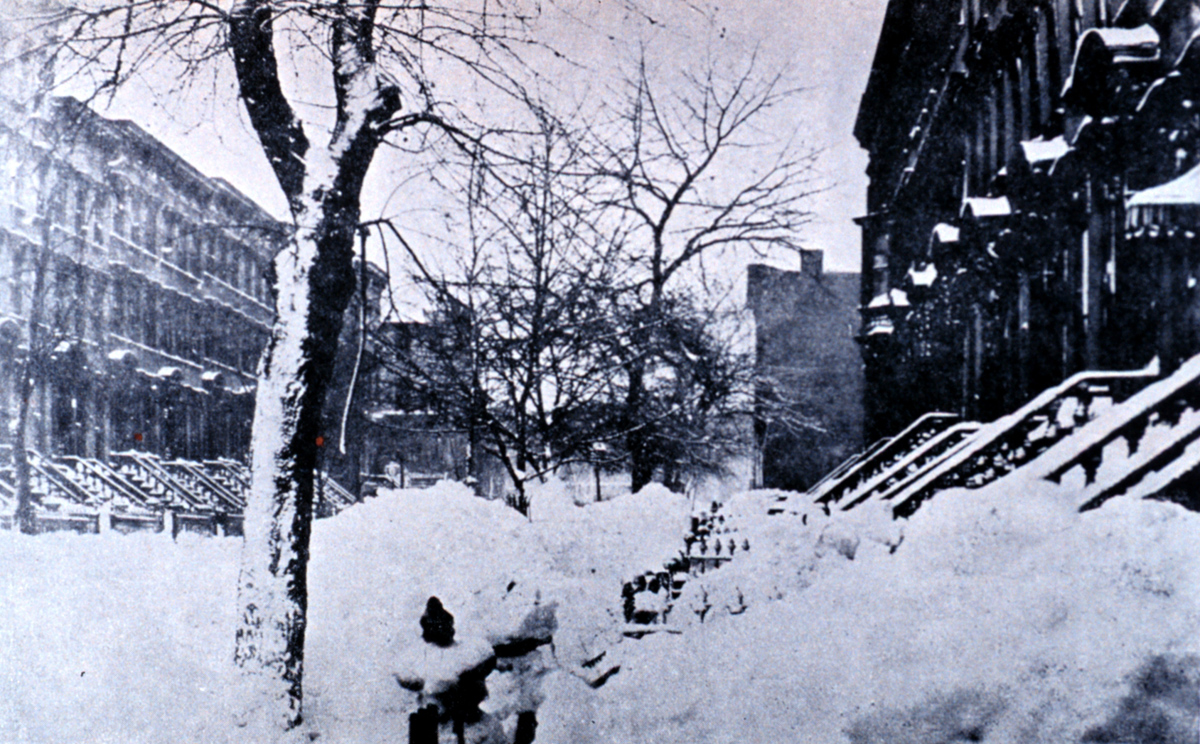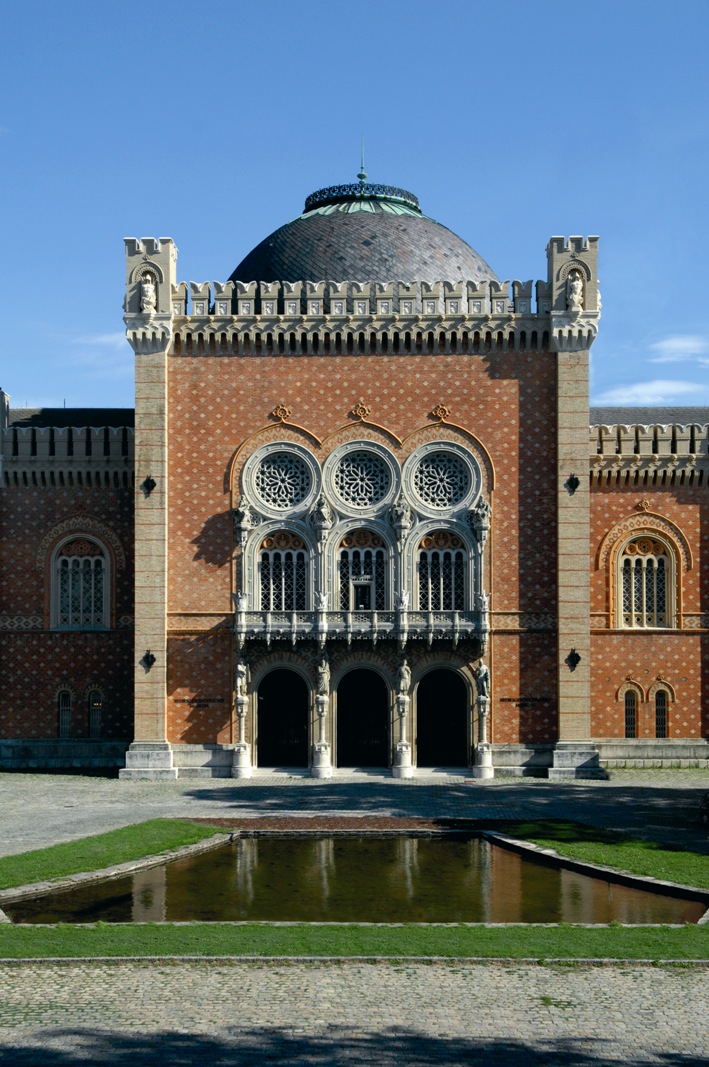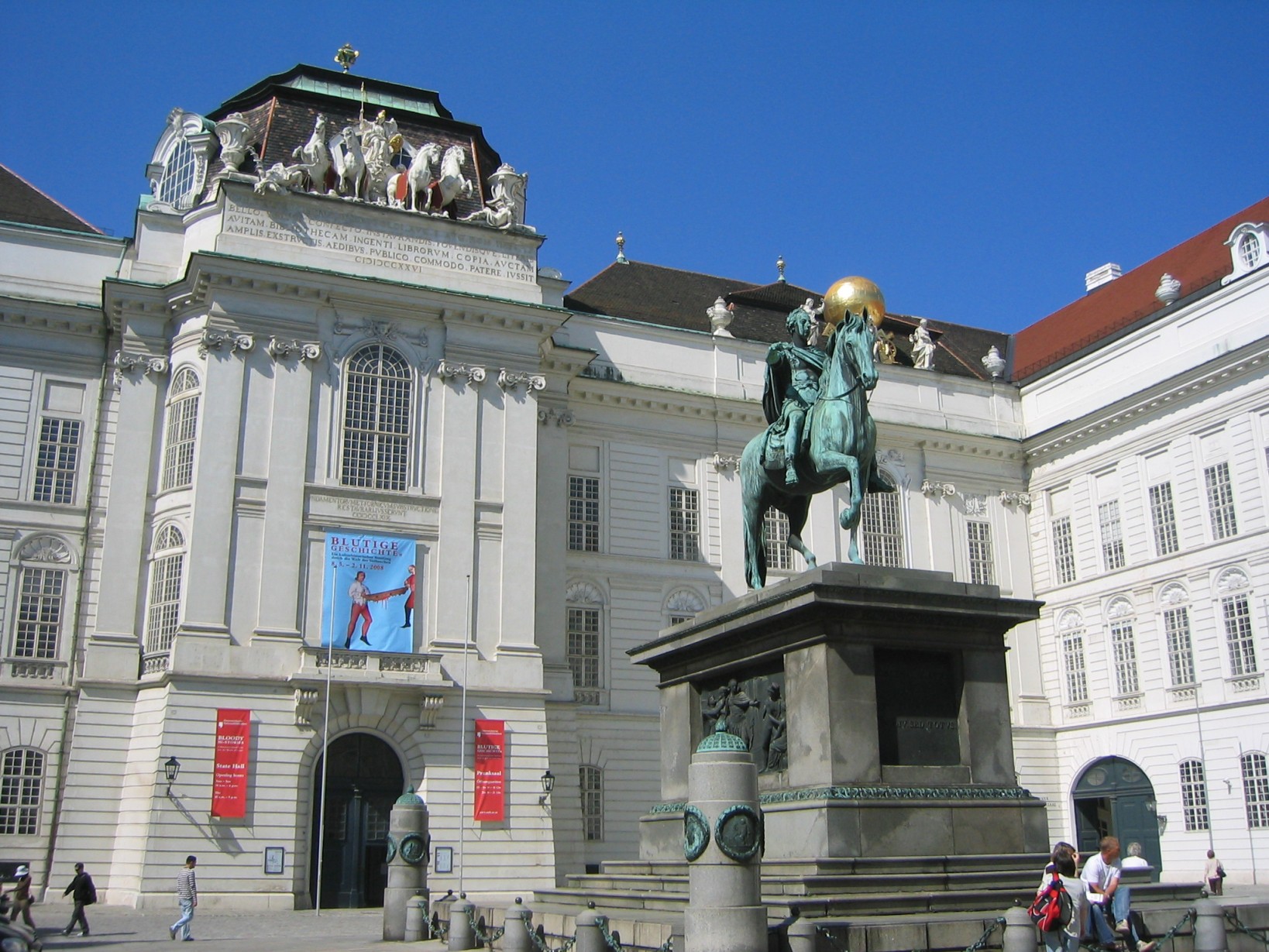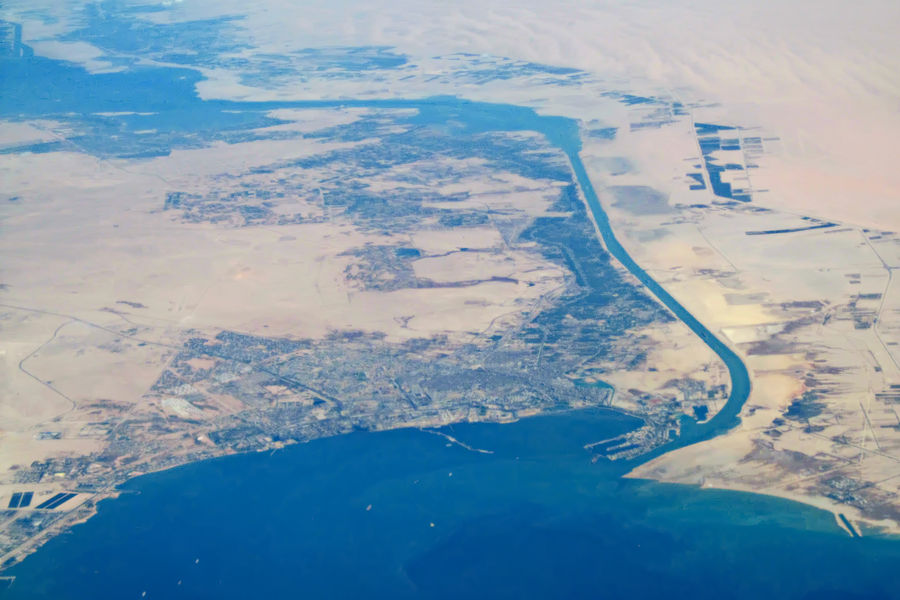|
Anton Filkuka
Anton Filkuka (April 30, 1888 – February 4, 1957) was a Viennese landscape, portrait and genre painter. He was a member of the professional association of Austrian artists. Biography Fikulka's father was a financial accountant and court clerk at the court of the German Emperor, his mother came from a German aristocratic family. The family had three children, two daughters and a son. Although Filkukas father had reservations about his son's desire to study art and become a painter, he fully supported his son‘s artistic goals. Filkuka received artistic training at the Vienna Academy of Fine Arts (1904–1913) under Sigmund L'Allemand and Christian Griepenkerl and at the master schools of Heinrich von Angeli and Kasimir Pochwalski. Already at the end of his studies, Filkuka was able to celebrate his first successes and he knew how to position himself in Viennese society. Filkuka was married to Magdalena Filkuka (nee Unger), with whom he had a daughter named Eva Maria. Magd ... [...More Info...] [...Related Items...] OR: [Wikipedia] [Google] [Baidu] |
Vienna
Vienna ( ; ; ) is the capital city, capital, List of largest cities in Austria, most populous city, and one of Federal states of Austria, nine federal states of Austria. It is Austria's primate city, with just over two million inhabitants. Its larger metropolitan area has a population of nearly 2.9 million, representing nearly one-third of the country's population. Vienna is the Culture of Austria, cultural, Economy of Austria, economic, and Politics of Austria, political center of the country, the List of cities in the European Union by population within city limits, fifth-largest city by population in the European Union, and the most-populous of the List of cities and towns on the river Danube, cities on the river Danube. The city lies on the eastern edge of the Vienna Woods (''Wienerwald''), the northeasternmost foothills of the Alps, that separate Vienna from the more western parts of Austria, at the transition to the Pannonian Basin. It sits on the Danube, and is ... [...More Info...] [...Related Items...] OR: [Wikipedia] [Google] [Baidu] |
Dürerbund
The Dürerbund (named after Albrecht Dürer) was an organization of writers and artists with a strong influence on the intellectual life of the middle class in the German Reich, but also in Austria and Switzerland. The Dürerbund was founded in 1902 by the German publisher Ferdinand Avenarius, a brother of the philosopher Richard Avenarius, and the art historian Paul Schumann (art historian), Paul Schumann. It resided in Blasewitz, Dresden-Blasewitz and had close connections to Deutscher Werkbund and the garden city movement, as Avenarius was a key person in these organizations too. The Dürerbund was not only the leading cultural organization in Germany that time, moreover it aimed at contributing to aesthetic education and education to love of nature of the broad masses. For many years, it was organized like a reading circle in which publications as ''Der Kunstwart'', a magazine initiated and edited by Avenarius, could be distributed effectively. [...More Info...] [...Related Items...] OR: [Wikipedia] [Google] [Baidu] |
1888 Births
Events January * January 3 – The great telescope (with an objective lens of diameter) at Lick Observatory in California is first used. * January 12 – The Schoolhouse Blizzard hits Dakota Territory and the states of Montana, Minnesota, Nebraska, Kansas and Texas, leaving 235 dead, many of them children on their way home from school. * January 13 – The National Geographic Society is founded in Washington, D.C. * January 19 – The Battle of the Grapevine Creek, the last major conflict of the Hatfield–McCoy feud in the Southeastern United States. * January 21 – The Amateur Athletic Union is founded by William Buckingham Curtis in the United States. * January 26 – The Lawn Tennis Association is founded in England. February * February 27 – In West Orange, New Jersey, Thomas Edison meets with Eadweard Muybridge, who proposes a scheme for sound film. March * March 8 – The Agriculture College of Utah (later Utah State University) i ... [...More Info...] [...Related Items...] OR: [Wikipedia] [Google] [Baidu] |
Albrecht Dürer
Albrecht Dürer ( , ;; 21 May 1471 – 6 April 1528),Müller, Peter O. (1993) ''Substantiv-Derivation in Den Schriften Albrecht Dürers'', Walter de Gruyter. . sometimes spelled in English as Durer or Duerer, was a German painter, Old master prints, printmaker, and history of geometry#Renaissance, theorist of the German Renaissance. Born in Free Imperial City of Nuremberg, Nuremberg, Dürer established his reputation and influence across Europe in his twenties due to his high-quality List of woodcuts by Dürer, woodcut prints. He was in contact with the major Italian artists of his time, including Raphael, Giovanni Bellini and Leonardo da Vinci, and from 1512 was patronized by Holy Roman Emperor, Emperor Maximilian I, Holy Roman Emperor, Maximilian I. Dürer's vast body of work includes List of engravings by Dürer, engravings, his preferred technique in his later prints, Altarpiece, altarpieces, portraits and self-portraits, watercolours and books. The woodcuts series are stylist ... [...More Info...] [...Related Items...] OR: [Wikipedia] [Google] [Baidu] |
Gundel-Prize
The Gundel Prize (German: Gundel-Preis) was awarded annually by the Academy of Fine Arts in Vienna Vienna ( ; ; ) is the capital city, capital, List of largest cities in Austria, most populous city, and one of Federal states of Austria, nine federal states of Austria. It is Austria's primate city, with just over two million inhabitants. ... to the students who excelled in the 6 art classes (painting, sculpture, engraving and medal arts, landscape painting, architecture and engraving). This court prize was donated to the academy in 1782 by the imperial court councillor ''Paul Anton von Gundel''. (PD ... [...More Info...] [...Related Items...] OR: [Wikipedia] [Google] [Baidu] |
Belvedere, Vienna
The Belvedere is a historic building complex in Vienna, Vienna, Austria consisting of two Baroque palaces (the Upper and Lower Belvedere), the Orangery, and the Palace Stables. The buildings are set in a Baroque park landscape in the third district of the city, on the south-eastern edge of its centre. It currently houses the Belvedere museum known in German as the Österreichische Galerie Belvedere (in English, referred to both as the Belvedere Museum and Austrian Gallery). The grounds are set on a gentle gradient and include decorative tiered fountains and cascades, Baroque sculptures, and majestic wrought iron gates. The Baroque palace complex was built as a summer residence for Prince Eugene of Savoy. The Belvedere was built during a period of extensive construction in Vienna, which at the time was both the imperial capital and home to the ruling Habsburg dynasty. This period of prosperity followed on from the commander-in-chief Prince Eugene of Savoy's successful conclusion o ... [...More Info...] [...Related Items...] OR: [Wikipedia] [Google] [Baidu] |
Museum Of Military History, Vienna
The Museum of Military History – Military History Institute () in Vienna is the leading museum of the Austrian Armed Forces. It documents the history of Austrian military affairs through a wide range of exhibits comprising, above all, weapons, armours, tanks, aeroplanes, uniforms, flags, paintings, medals and badges of honour, photographs, battleship models, and documents. Although the museum is owned by the Federal Government, it is not affiliated with the Federal museums but is organised as a subordinate agency reporting directly to the Ministry of Defence and Sports.''Weißbuch 2012''. Amtliche Publikation der Republik Österreich/Bundesminister für Landesverteidigung und Sport, Wien 2013, S. 58 f. The museum building and its history The museum building (Arsenal object number 18) is the centrepiece of Vienna's Arsenal, a huge military complex previously consisting of a total of 72 buildings erected in the wake of the 1848/49 revolution. The Arsenal was the ... [...More Info...] [...Related Items...] OR: [Wikipedia] [Google] [Baidu] |
Oesterreichische Nationalbank
The (, , abbr. ) is the National central bank (Eurosystem), national central bank for Austria within the Eurosystem. It was the Austrian central bank from 1923 to 1938 and from 1945 to 1998, issuing the Austrian schilling, shilling. It started operations on under the economic assistance provided to Austria by the Economic and Financial Organization of the League of Nations, replacing the Austro-Hungarian Bank with its name recalling that of the Austro-Hungarian Bank's predecessor entity founded in 1816. It was liquidated following the Anschluss in March 1938, and re-established in July 1945. The OeNB is a Aktiengesellschaft, joint-stock corporation governed by special legislative provision. Its entire capital of €12 million has been held by the Austrian federal government since May 2010, with shareholder rights exercised by the Minister of Finance. Before 2010, half of the capital was in the hands of employer and employee organizations as well as banks and insurance ... [...More Info...] [...Related Items...] OR: [Wikipedia] [Google] [Baidu] |
Austrian National Library
The Austrian National Library (, ) is the largest library in Austria, with more than 12 million items in its various collections. The library is located in the Hofburg#Neue Burg, Neue Burg Wing of the Hofburg in Innere Stadt, center of Vienna. Since 2005, some of the collections have been relocated within the Baroque structure of the Palais Mollard-Clary. Founded by the House of Habsburg, Habsburgs, the library was originally called the Imperial Court Library (); the change to the current name occurred in 1920, following the end of the Habsburg Monarchy and the proclamation of the Austrian Republic. The library complex includes four museums, as well as multiple special collections and archives. Middle Ages The institution has its origin in the imperial library of the Middle Ages. During the Medieval period, the Austrian Duke Albert III, Duke of Austria, Albert III (1349–1395) moved the books of the Viennese vaults into a library. Albert also arranged for important works from L ... [...More Info...] [...Related Items...] OR: [Wikipedia] [Google] [Baidu] |
Suez Canal
The Suez Canal (; , ') is an artificial sea-level waterway in Egypt, Indo-Mediterranean, connecting the Mediterranean Sea to the Red Sea through the Isthmus of Suez and dividing Africa and Asia (and by extension, the Sinai Peninsula from the rest of Egypt). The canal is a key trade route between Europe and Asia. In 1858, French diplomat Ferdinand de Lesseps formed the Suez Canal Company, Compagnie de Suez for the express purpose of building the canal. Construction of the canal lasted from 1859 to 1869. The canal officially opened on 17 November 1869. It offers vessels a direct route between the Atlantic Ocean#North Atlantic, North Atlantic and northern Indian Ocean, Indian oceans via the Mediterranean Sea and the Red Sea, avoiding the South Atlantic and southern Indian oceans and reducing the journey distance from the Arabian Sea to London by approximately , to 10 days at or 8 days at . The canal extends from the northern terminus of Port Said to the southern terminus of Port ... [...More Info...] [...Related Items...] OR: [Wikipedia] [Google] [Baidu] |
Mohamed Naguib
Major General Mohamed Bey Naguib Youssef Qutb El-Qashlan (; 19 February 1901 – 28 August 1984), known simply as Mohamed Naguib (, ), was an Egyptian military officer and revolutionary who, along with Gamal Abdel Nasser, was one of the two principal leaders of the Free Officers Movement (Egypt), Free Officers movement of 1952 that 1952 Egyptian revolution, toppled the Muhammad Ali dynasty, monarchy of Egypt and the Sudan, leading to the establishment of the Republic of Egypt (1953–1958), Republic of Egypt. A distinguished and decorated general who was wounded in action in the 1948 Arab–Israeli War, he became the leader of the Free Officers Movement (Egypt), Free Officers Movement of nationalist army officers opposed to the continued presence of United Kingdom, British troops in Egypt and Sudan, and the corruption and incompetence of Farouk of Egypt, King Farouk. Following the toppling of Farouk in July 1952, Naguib went on to serve as the head of the Egyptian Revolutionary C ... [...More Info...] [...Related Items...] OR: [Wikipedia] [Google] [Baidu] |
House Of Liechtenstein
The House of Liechtenstein (), from which the principality takes its name, is the family which reigns by hereditary right over the principality of Liechtenstein. Only Dynasty#Dynast, dynastic members of the family are eligible to inherit the throne. The dynasty's membership, rights and responsibilities are defined by a law of the family, which is enforced by the Prince of Liechtenstein, reigning prince and may be altered by vote among the family's dynasts, but which may not be altered by the Politics of Liechtenstein, Government or Parliament of Liechtenstein.Princely House of Liechtenstein. House Laws' History The family originates from Liechtenstein Castle in Lower Austria (near Vienna), which the family possessed from at least 1136 to the 13th century, and from 1807 onwards. The progenitor Hugo von Liechtenstein (d. 1156) built Liechtenstein Castle around 1122-36 on a fief that he received from the Babenberg margraves of Austria. He also received Petronell-Carnuntum, Petrone ... [...More Info...] [...Related Items...] OR: [Wikipedia] [Google] [Baidu] |







